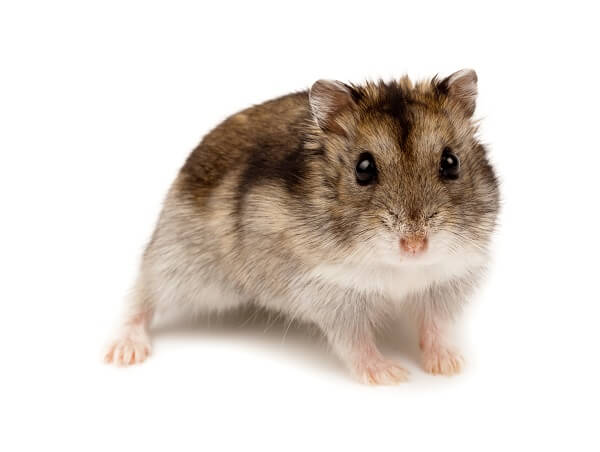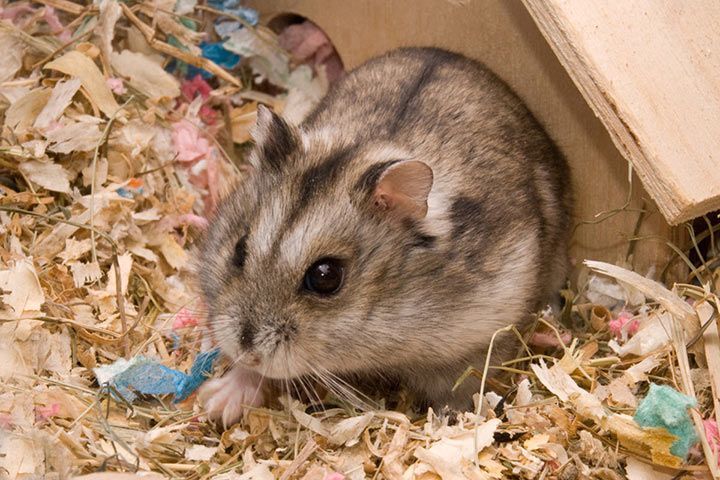Campbell’s Dwarf Hamster Facts
Campbell’s dwarf hamster, a charming and small rodent, has gained popularity as a pet due to its endearing nature and manageable size. Known for their playful behavior and social characteristics, these hamsters are fascinating creatures that require specific care to thrive. In this article, we will delve into essential facts about Campbell’s dwarf hamsters, their habitat, behavior, diet, and health care needs, enhancing your understanding of these delightful pets.
Understanding Campbell’s Dwarf Hamster
Originating from Central Asia, Campbell’s dwarf hamsters have become popular in the pet trade. They are smaller than other common hamster breeds, typically growing to about 3 to 4 inches in length. Their coats can vary from gray and brown to shades of white, making them visually appealing. Additionally, these hamsters have a short, stocky build, which contributes to their unique personality traits. As a pet owner, recognizing their needs and behavior is crucial for their well-being and longevity.

Physical Characteristics
Campbell’s dwarf hamsters possess distinct physical features. Small and stout, they have a rounded body with a significant, fluffy tail. Their fur is soft and dense, offering protection against temperatures in their native habitats. The colors of Campbell’s can also change during different seasons, especially in winter, leading to a stunning white coat, similar to their winter white counterparts. Understanding these characteristics can help owners identify the health of their pets and ensure proper care.
Behavior and Socialization
Social by nature, Campbell’s dwarf hamsters thrive in environments that promote interaction, either with other hamsters or their owners. They often exhibit playful behaviors, such as running on wheels, digging, and storing food. However, keeping males together can sometimes result in aggression, so it’s vital to monitor social interactions carefully. Gradual introductions and proper housing can aid in fostering friendly relationships, making the habitat an enjoyable place for these little creatures.
Care and Habitat
Creating the right habitat for Campbell’s dwarf hamster is critical to their health and happiness. They require spacious cages that allow for climbing and exploring. Bedding material should be soft and absorbent, like aspen or paper-based products, which also help control odors. Adding tunnels, chew toys, and a wheel keep them engaged, ensuring they have various activities daily. By providing an enriched environment, hamster owners facilitate positive mental stimulation and a healthier lifestyle.
Nutritional Requirements
Proper nutrition is a cornerstone of care for Campbell’s dwarf hamsters. A balanced diet should include a high-quality pellet formulated for hamsters, along with a small selection of fresh fruits and vegetables. Owners should introduce new foods gradually to avoid digestive issues. It’s essential to avoid sugary treats or citrus fruits, which can upset a hamster’s stomach. Fresh water should always be available in a clean, accessible container to keep them hydrated and healthy.
Health and Common Issues
Regular health checks are essential to keep Campbell’s dwarf hamsters in good condition. Some common health issues include wet tail, which is an infectious disease, and dental problems due to their worn-down teeth. Signs of discomfort, such as lethargy or changes in eating habits, should be promptly addressed. Creating a routine check-up schedule with a veterinarian knowledgeable about exotic pets can help detect any potential health concerns early, ensuring your hamster remains happy and safe.
Fun Facts About Campbell’s Dwarf Hamster
Campbell’s dwarf hamsters are intriguing little creatures with many quirks and fun facts. For instance, they enjoy hoarding food in their cheeks, which can surprisingly hold more than their body size! Their social nature leads them to be quite interactive, often seeking attention and enjoying playtime outside their cages. Understanding these behaviors not only makes them captivating pets but also enriches the owner’s experience and bond with these adorable rodents.
Interactive Toys and Activities
To keep your hamster engaged, providing interactive toys and setup is essential. Wheel running is a favorite activity among these hamsters, promoting physical fitness. Adding tubes for tunneling, treat dispensers, and climbing structures not only enhances their habitat but also supports their natural behaviors. Consider rotating toys regularly to maintain their interest and introduce new stimulation. This practice promotes a happier environment for your Campbell’s dwarf hamster.
Training Your Campbell’s Dwarf Hamster
While it may surprise some, Campbell’s dwarf hamsters can be trained to perform simple tasks like coming when called or using a litter box. Using treats as positive reinforcement, owners can gradually teach their hamsters different commands or behaviors. Taking the time to train enhances the owner-pet relationship and provides exercise for the hamster’s mind, ensuring they remain engaged in their environment. It also sets the groundwork for a more friendly and manageable pet.
Key Takeaways
- Provide a spacious habitat rich in enrichment activities.
- Diet should consist of a high-quality hamster pellet supplemented with fresh foods.
- Regular health checks are crucial to prevent common issues.
- Engagement through play and training enhances their quality of life.
FAQ
1. What should I feed my Campbell’s dwarf hamster?
Feeding your Campbell’s dwarf hamster includes a main diet of a nutritionally balanced hamster pellet, along with occasional treats such as fruits and vegetables. It’s best to avoid sugary or acidic options that can upset their sensitivities. Regular fresh water should be provided at all times to keep them healthy and hydrated.
2. Can Campbell’s dwarf hamsters live together?
While they can live together, it’s essential to carefully consider their social dynamics. Male Campbell’s often exhibit territorial behavior towards other males, leading to aggression. On the other hand, females can sometimes coexist more peacefully. It’s advisable to monitor their interactions closely when introducing new hamsters to ensure compatibility.
3. How can I tell if my hamster is sick?
Signs of illness in Campbell’s dwarf hamsters include changes in appetite, lethargy, unusual behaviors, and difficulty moving. If you observe any of these symptoms, it’s imperative to consult with a veterinarian who specializes in exotic pets. Early detection and treatment can lead to a better prognosis for your little friend.
4. How often do I need to clean my hamster’s cage?
Cleaning your Campbell’s dwarf hamster’s cage should be done at least once a week to ensure a safe and healthy environment. However, spot cleaning daily can help manage odors and remove soiled bedding. A thorough cleaning includes changing the bedding and disinfecting toys and surfaces to prevent the buildup of bacteria and disease.
5. What is the average lifespan of Campbell’s dwarf hamsters?
The average lifespan of Campbell’s dwarf hamsters typically ranges from 2 to 3 years. However, with proper care, regular veterinary checkups, and a healthy environment, some may live longer. Quality care directly impacts their health and longevity, ensuring you enjoy many joyful moments together.
In conclusion, Campbell’s dwarf hamsters are delightful and engaging pets that require the right care to flourish. By understanding their behaviors, needs, and health, owners can establish a lasting bond with these charming little creatures.
